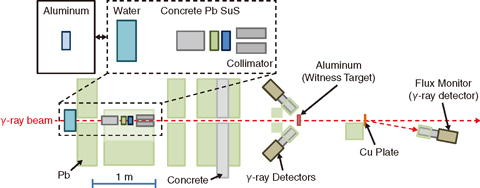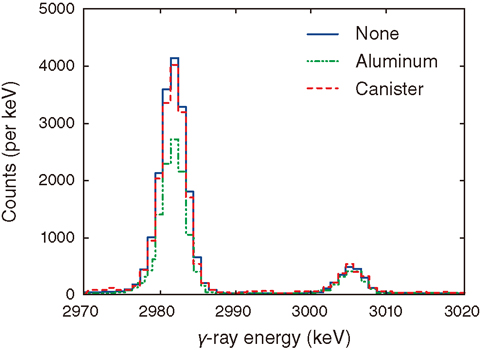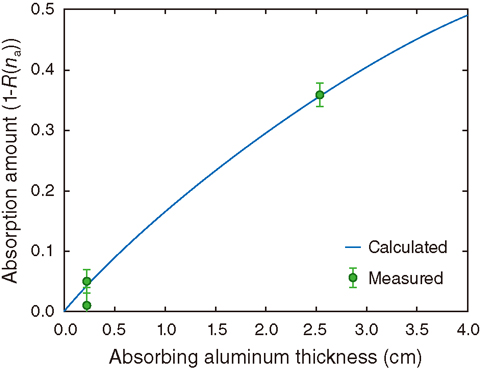
Fig.5-7 Diagram of the TMI-2 transmission nuclear resonance fluorescence experiment

Fig.5-8 27Al nuclear resonance fluorescence peaks

Fig.5-9 Absorption amount for the 2982 keV state
Transmission nuclear resonance fluorescence (NRF) is a promising method for precision non-destructive assay (NDA) of 239Pu in spent fuel stored inside a canister. This method may be needed to assay the melted fuel from the TEPCO’s Fukushima Daiichi NPS if the fuel were immediately placed in such a canister, an action that would minimize the possibility of future re-contamination. The Three Mile Island Unit 2 (TMI-2) canister, which was used to store the melted fuel from the Three Mile Island NPS, is one possible candidate. To demonstrate the feasibility of using transmission NRF to assay material inside of a TMI-2 canister, an experiment was conducted at the HIγS facility at Duke University in North Carolina, USA (Fig.5-7).
With transmission NRF, the decrease in NRF scattering from a 239Pu witness target (normalized by flux), or, in other words, the absorption amount, R (na), is proportional to the amount of 239Pu through which the γ-ray beam is transmitted. This proportionality is guaranteed because of the resonant absorption nature of NRF. In the demonstration experiment, 27Al was used in place of 239Pu because of their similar NRF properties. The absorption amounts due to aluminum in a simulant TMI-2 canister and in other absorption targets were measured at a γ-ray energy of 2980 keV.
The flux normalized NRF spectra displayed resonant absorption (Fig.5-8), verifying assay feasibility. The measured absorption amount in each case was consistent with the expected absorption amount (Fig.5-9). This agreement demonstrates that overlapping resonances from competing isotopes in the TMI-2 canister should not interfere with the assay.